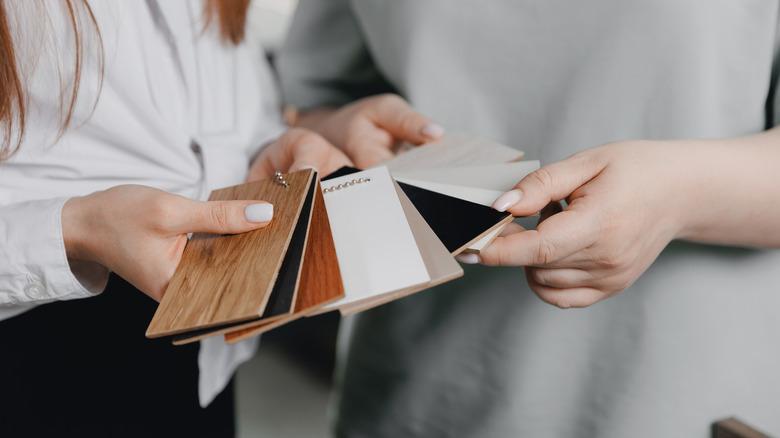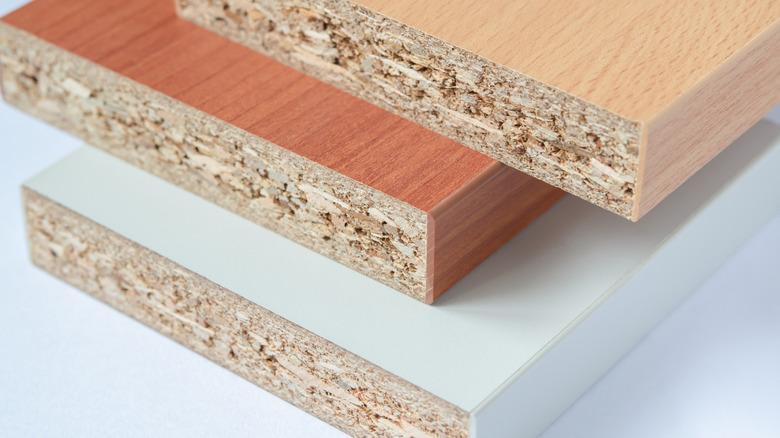The Common Cabinet Choice That Can Set You Back When Selling Your Home
If you're planning on selling your house, certain home improvement projects can have a decent return on investment (ROI) when it comes to getting the most bang for your buck. And while any updates you plan to make before listing need to make sense monetarily, it's also essential to keep the future buyer in mind when making material selections. For example, it may not be financially justifiable to make massive splurges on super-custom materials, just to sell it to someone else who may not value it as much as you do. On the other hand, it may not be prudent to cheap out on builder-grade materials either for fear of lowering the perceived value of the house.
There's one area of the home that is especially important for material selections, thanks to its hardworking nature and high stakes for prospective buyers: The kitchen. One survey after another reports that buyers value updated kitchens, and it shows in both the offer price and speed. With kitchen cabinetry costs often being the highest ticket item at about 20-40% of the entire renovation budget, it can be very tempting to opt for the most affordable material, particle board. Particle board is a material made from compressed wood waste materials (like chips, shavings, and sawdust) held together with resin that's compressed under high heat and pressure, then coated or veneered to turn it into cabinetry material. The advantages are that particle board cabinets are inexpensive, lightweight, made from recycled materials, and give you a smoothed finished surface. However, despite the temptation and friendly-price tag, there are some serious downsides to choosing this material, especially when it comes to the offer price you hope to get on your property.
Low quality particle board cabinets will translate to a lower resale appeal and value from potential buyers
So what exactly is the issue with particleboard, and how can these cabinets negatively affect your sales price? Despite the affordable appeal, the tradeoff with particle board cabinets when compared to plywood, solid wood, or even other MDF alternatives, is that they are far less durable, are prone to moisture damage, and don't tend to hold screws very well over the long run, meaning they have a significantly shorter lifespan. And while white particle board cabinets will set you back 30-50% less than plywood counterparts initially, the need to replace them sooner may make them a more expensive route in the long run.
Today's home buyers are savvy – most are smart shoppers who walk into a house and understand what they're looking at when it comes to materials and finishes. Cheap, low-quality selections are likely to strongly impact their impression of your property. It stands to reason that when you take the affordable route and select lower-grade materials, this quality will reflect in the home's perceived appeal and resale price. Spending the money on higher-end, quality materials in a kitchen pays off – not only do they often sell above the asking price, but the median list price on homes that feature a new, remodeled kitchen is $14,500 higher than the national median, per CGP Real Estate. Potential buyers will put a higher value on updates that feature quality materials that will stand the test of time.
So do yourself a favor if you are remodeling and plan to list your house on the market (or not!), and opt for a higher-quality cabinet material than particleboard to get more return on your investment and value towards the sale price of your home.

